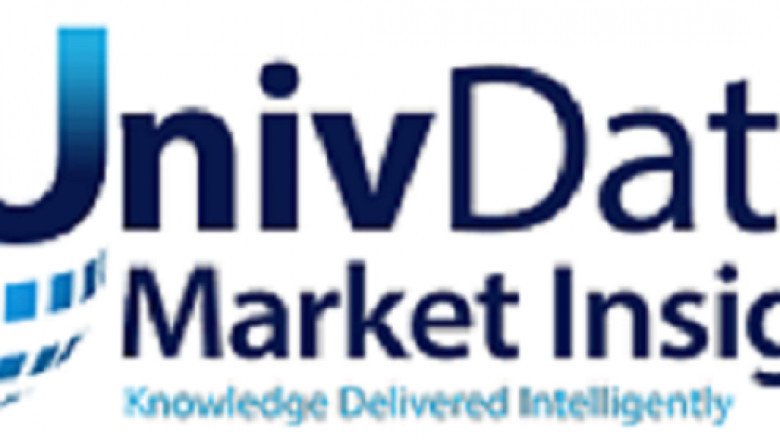
views
Synthetic Biology Market Size, Share, Growth, Analysis 2021-2027
As per UnivDatos Market Insights, the Synthetic Biology Market was valued at ~US$ 35 billion in 2020 and is expected to grow at a CAGR of ~20% during the forecast period (2021-2027). The surge in the Synthetic Biology Market is on account of the reduction in the cost of genome sequencing. Genome sequencing was once extremely expensive. In 1990, the Human Genome Project, an international effort to decode the human genome was launched and it took 13 years and an estimated USD 2.7 billion to complete. In 2007, DNA pioneer James Watson became the first person to get his genome sequenced under USD 1 million. Ever since the cost of genome sequencing has been decreasing at a rate faster than Moore’s law. The past two decades have seen a revolution in genome sequencing with remarkable boosts in speed and efficiency coupled with massive reductions in cost. Gene sequencing has proved its effectiveness as a diagnostic and prognostic tool. Gene Sequencing has set a gold standard in cancer research due to its usefulness in the identification of BRCA1 mutations. Moreover, with the personalized medicine trends as well as collaborations between the regulatory authorities and industry, whole-genome sequencing (WGS) is turning into common practice.
For a detailed analysis of key drivers of Synthetic Biology Market browses through.
The report “Synthetic Biology Market: Current Analysis and Forecast (2021-2027)” by UnivDatos Market Insights deliver a comprehensive analysis of the Tools, Technology, Application, and region/country
Based on Tools, the market is fragmented into Oligonucleotides and Synthetic DNA, Enzymes, Cloning Technologies Kits, Synthetic Cells, Chassis Organisms, and Xeno-nucleic Acids. The oligonucleotides & synthetic DNA segment dominated the market in 2020 and is expected to grow at lucrative during the forecasted period owing to increasing demand for synthetic genes, synthetic DNA, and synthetic RNA which are employed in a wide range of applications. In February 2021, Sarepta Therapeutics Inc., the leader in precision genetic medicine for rare diseases, announced the U.S. Food and Drug Administration (FDA) approval of AMONDYS 45 (casimersen). AMONDYS 45 is an antisense oligonucleotide from Sarepta’s phosphorodiamidate morpholino oligomer (PMO) platform, indicated for the treatment of Duchenne muscular dystrophy (DMD) in patients with a confirmed mutation amenable to exon 45 skipping.
Based on Technology, the market is bifurcated into Gene Synthesis, Genome Engineering, Sequencing, Bioinformatics, Site-directed Mutagenesis, Cloning, Measurement and Modeling, Microfluidics, and Nanotechnology. The Gene Synthesis segment dominated the market in 2020 and is expected to grow at lucrative during the forecasted period.
Based on Application, the market is bifurcated into Pharmaceuticals & Diagnostics, Chemicals, Medical Biofuels, Bioplastics, and Others (Environment, Agriculture & Aquaculture). The Medical segment dominated the market in 2020 and is expected to grow at lucrative during the forecasted period owing to several factors such as the extensive research on new and better treatments, coupled with the availability of huge private and public funding for the discovery of novel therapies.
Market Segmentation:
1. By Tools (Oligonucleotides and Synthetic DNA, Enzymes, Cloning Technologies Kits, Synthetic Cells, Chassis Organisms, and Xeno-nucleic Acids)
2. By Technology (Gene Synthesis, Genome Engineering, Sequencing, Bioinformatics, Site-directed Mutagenesis, Cloning, Measurement and Modeling, Microfluidics, and Nanotechnology)
3. By Application (Pharmaceuticals & Diagnostics, Chemicals, Medical Biofuels, Bioplastics, and Others (Environment, Agriculture & Aquaculture)
4. By Region (North America, Europe, Asia-Pacific, Rest of the World)
5. By Company (Thermo Fisher Scientific, Merck KGaA, Agilent Technologies, Inc., Novozymes A/S, Ginkgo Bioworks, Amyris, Precigen, GenScript Biotech Corporation, Twist Bioscience, and Synthetic Genomics)
Key questions answered in the study:
1. What are the current and future trends of the Synthetic Biology industry?
2. How the industry has been evolving in terms of Tools, Technology, Application, and region/country?
3. How the competition has been shaping across the countries followed by their comparative factorial indexing?
4. What are the key growth drivers and challenges for the Synthetic Biology industry?
5. What are the customer orientation, purchase behavior, and expectations from the Synthetic Biology firms across various regions?








![The Ultimate Guide to Creating an Uber for X App [2022]](https://businessinmyarea.com/upload/media/posts/2022-08/18/the-ultimate-guide-to-creating-an-uber-for-x-app-2022_1660813826-s.jpg)



Comments
0 comment